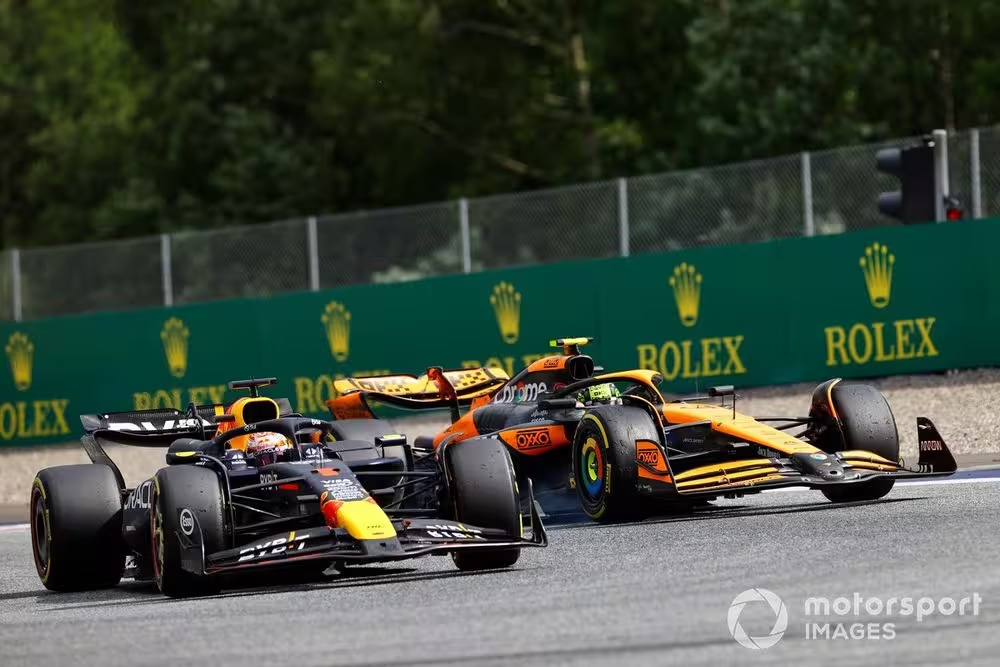While Max Verstappen and Lando Norris have agreed to move on from their Austrian Grand Prix collision, the issue of Formula 1’s racing rules remains a hot topic.
And, while opinion is divided right now between those who think we need more regulation to drive out uncertainty, and those who think we should just ‘let them race’, the situation is one that will ultimately never have a perfect solution.
Even as the FIA has moved to try to deliver greater clarity, even documents it has issued regarding rules of racing admit that the nature of motorsport means every incident has to be judged on its own merit.
That is why even what appears to be a black-and-white guideline sent to F1 teams and drivers that ban moving under braking falls into a grey area.
The FIA has made a lot of effort over the past two years in framing a set of what it calls Driving Standards that it wants to put into the International Sporting Code to apply to all its categories.
These have been pulled together following consultation with teams and drivers, to make sure that everyone is on the same page when it comes to understanding what is and is not allowed.
These guidelines are not yet formally in the rule book, but teams were notified back in February that they would form the basis of how stewards would take decisions on any potential infringements.
It is made clear that the terms would be used as a “guide to the decision-making process of the Stewards and are not binding. The Stewards will use their discretion”.
Inside the guidelines, a copy of which has been seen by Motorsport.com, is a specific reference to the stance on moving under braking.
Max Verstappen, Red Bull Racing RB20, leads Lando Norris, McLaren MCL38
Photo by: Andy Hone / Motorsport Images
It states: “When defending, there must be no change in direction by the defending car, after the deceleration phase has commenced, except to follow the racing line.”
This statement appears to be definitive and would suggest that the kind of movements we saw from Verstappen in Austria could fall across the line of what is not allowed – because, as Norris complained about, he appeared to move in the braking zone several times.
However, as is explicitly acknowledged in the document, it is an impossible task to impose such a black-and-white definition to be applied to every incident.
Indeed, in a section at the start of the guidelines highlighted as “Important Notes”, it is emphasised that: “Racing is…
Click Here to Read the Full Original Article at Motorsport.com – Formula 1 – Stories…

